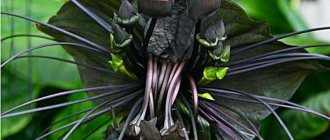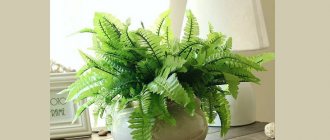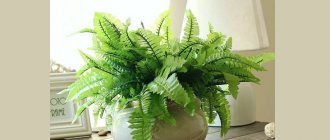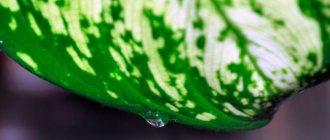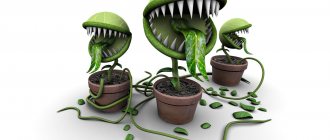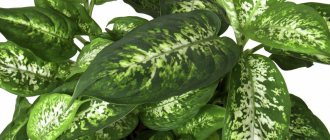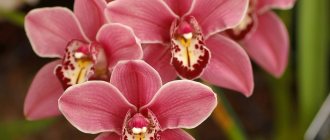Plants with bad energy according to folk signs
Everything in life has a second essence, and it is not always good. The same applies to plants, which are capable of harboring dangerous energy that has a detrimental effect on human health. There are many folk signs associated with such indoor flowers. According to popular belief, the following types of flowers are considered the most undesirable guests in the house.
Ivy
Ivy is a dark plant that has a connection with the other world. It was not without reason that ancient crypts were decorated with the image of a climbing ivy vine. Such a drawing is a symbol of the destruction of human order and the triumph of dark forces. Popular beliefs say that ivy is an energy vampire in the guise of a pretty plant, so our ancestors avoided growing it in their homes.
Sansevieria
Sansevieria is a beautiful crop, but very finicky and delicate. The flower is difficult to care for, and even with full compliance with all growing rules, the crop may die. It is believed that the plant attracts difficulties and troubles into the home of its owners.
Externally, the shoots of Sansevieria resemble snakes, therefore, in folk superstitions, the culture is associated with cruelty, aggression, and anger.
cacti
Surprisingly, cute and, at first glance, innocent cacti are also popularly considered not the best option for the home. Their appearance and essence are contradictory and ambiguous. The thorns symbolize the constant struggle for life, and the beautiful blooms reveal its meaning. Such inconstancy, as was popularly believed, could be transmitted to the owner of the flower.
Orchid
Orchid loves strong-willed and strong people, but culture will only bring trouble to indecisive individuals. The plant is a real energy vampire, capable of absorbing vital energy from everything that surrounds it. Therefore, people who are weak in spirit will face great difficulties and troubles if they place this beautiful flower in their home.
Palm trees
Palm trees grown independently bring prosperity and well-being to the home. But purchased or donated plants, alas, only cause trouble. Particularly “evil” are:
- Washingtonia;
- chamedorea;
- yucca;
- date fruit.
Plants have quite aggressive energy, so they are not suitable for the home. If you like plants of this type, it is better to place them in your office or other place.
Fern
Ferns of all types are common in homes. However, home owners make a big mistake, since such crops can cause allergies and headaches. And if you believe the signs, then the fern is the main obstacle to marriage for young girls.
Also read: Venus Flytrap floral predator
Rose
Indoor roses are plants with powerful energy, the supply of which must be constantly replenished. And the plants do this at the expense of their owners. The result is a feeling of exhaustion, powerlessness, and moral fatigue.
Scindapsus
The plant is considered a "husband's herb". The presence of scindapus in the house scares away potential husband candidates from women. In view of this sign, unmarried girls are not recommended to take this crop into their home. But after marriage, growing scindapus is not prohibited.
Calla lilies
Callas are considered a symbol of sadness. They bring sadness and can even cause prolonged depression. The flower is associated with mourning and death, so it is not recommended for people who are particularly sensitive and prone to melancholy to keep calla lilies in the house.
Ficus
The beautiful ficus plant has not been spared superstitions either. Its presence in the house causes infertility in a man or woman. However, there is an opposite version, which says that culture brings prosperity and prosperity to the home.
Whether to believe the signs associated with indoor plants or not is everyone’s business. Most of the legends described are now considered to be empty superstitions, but there are also people who firmly believe in their veracity.
Azalea or Rhododendron.
The beautiful Azalea has only 1 drawback - it is poisonous. The most poisonous parts of the plant are young leaves and flower nectar. Nectar can cause severe allergic reactions, causing salivation, irritation of the nasal mucosa, and even vomiting. But the leaves, fortunately, cause poisoning only when they enter the stomach, because they contain the glycoside andromedotoxin . But we don’t plan to eat it, do we?
This list includes plants that many people already love. Don’t rush to get rid of them, just keep children and animals away from them, and be very careful yourself.
This is not a complete list of poisonous plants, so write in the comments what other poisonous indoor plants live on our windowsills.
Dieffenbachia
Dieffenbachia can cause swelling of the larynx if you taste its leaves. In particularly sensitive people and children, such an action can cause poisoning. When transplanting or pruning, the plant will burn you with its juice, and if there are people with allergies in the house, then they will obviously have a hard time with such a green “neighbor”.
Adenium flower
This houseplant is small in size, has a characteristic thickening at the base of the stem that serves as a water reservoir, and has beautiful pink or red flowers depending on the species. However, growing adenium at home is not safe.
In the wild, adenium grows on the African continent and is called “desert rose”. For centuries, some African tribes have used an extract extracted from adenium flowers as a poison for their arrows and spears. To obtain this poison, the flowers of the plant are boiled for 12 hours, removing all the water and leaving only the active substance.
The poison contained in the resulting substance is so strong that if a poisoned arrow hits an animal, it is not able to escape even 2 km. With the help of adenium toxin, African tribes hunt large animals in their area, including elephants.
The active substance in the plant's poison is called ouabain. When it enters the body in large doses, respiratory failure occurs almost instantly and the person dies.
monstera flower
Just by the name alone you can tell that you should be careful with this plant, because it means “monster” in Latin. The monstera received this name for the unusual shape of its leaves, which have natural holes, as well as for its enormous size, since in the wild it can grow up to 20 m in height. Monstera is grown as an indoor flower because of its large, dark green leaves with holes, and also because of its low requirements for sunlight and easy care. Monstera can often be seen not only in the homes of amateur gardeners, but also in the office premises of various companies.
Despite this, the flower can safely be included in the list of those plants that cannot be kept at home, since all its parts are poisonous due to the calcium oxalate content in them. If parts of the monstera enter the body, they cause vomiting, tongue paralysis and general serious poisoning of the body, as a result, medical intervention will be required to eliminate the dangerous symptoms. Getting monstera juice on the face leads to a strong burning sensation and swelling of the face.
Given the large size of the plant, it is very difficult to place it in a place in the house inaccessible to children and pets, so it is recommended not to breed monstera at home.
It is interesting to note that it is grown commercially for its fruits, which are completely harmless.
